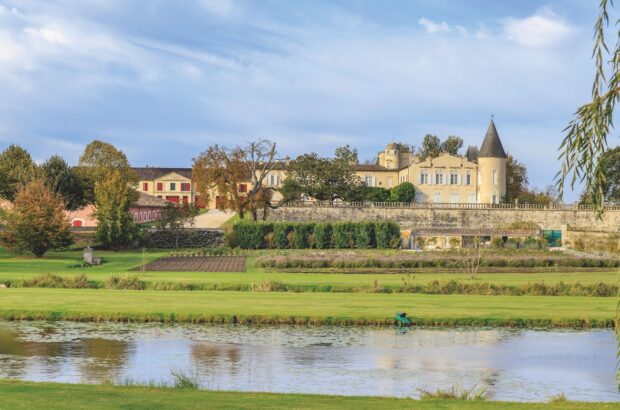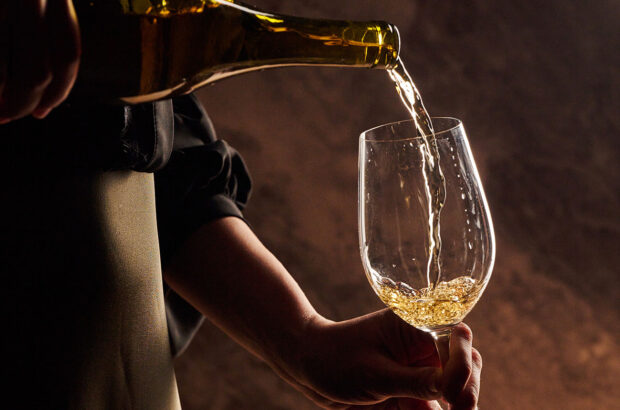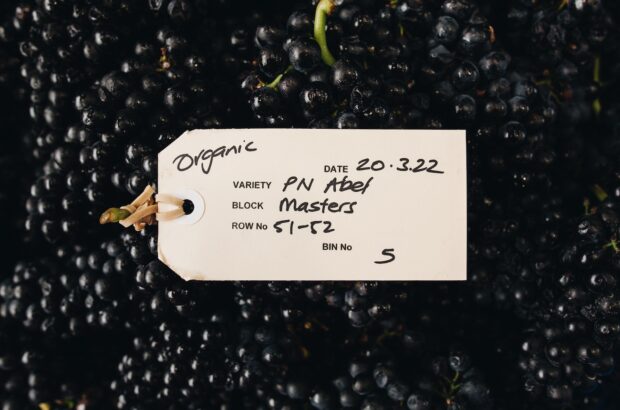The role of chef de cave is integral to any Champagne house. But what happens when it is time to hand over the art of blending to a newcomer? Anne Krebiehl MW talks to four pairs of winemakers to find out...
Blending Champagne is an art. Most Champagne is the antithesis of a single-vineyard wine, a carefully calibrated composition made from numerous base wines: different grape varieties, different sites, different vinification methods, and different vintages.
{"content":"PHA+VGhpcyBpcyBlc3BlY2lhbGx5IHRydWUgd2hlbiBpdCBjb21lcyB0byBub24tdmludGFnZSBDaGFtcGFnbmUuIENvbnNpc3RlbmN5IGlzIGFsbC4gSG93IHdpbGwgdGhlIHN0aWxsIGJhc2Ugd2luZXMgZXZvbHZlIHRvZ2V0aGVyIGFmdGVyIGEgc2Vjb25kIGZlcm1lbnRhdGlvbiBhbmQgeWVhcnMgb2YgbGVlcyBhZ2Vpbmc\/IFdoYXQgaXMgdGhlaXIgdHJhamVjdG9yeT8gV2hhdCB3aWxsIHRoZSBmaW5hbCBDaGFtcGFnbmUgYmUgbGlrZT88L3A+CjxwPjxkaXYgY2xhc3M9ImFkLWNvbnRhaW5lciBhZC1jb250YWluZXItLW1vYmlsZSI+PGRpdiBpZD0icG9zdC1pbmxpbmUtMSIgY2xhc3M9ImlwYy1hZHZlcnQiPjwvZGl2PjwvZGl2PjwvcD4KPGhyPgo8aDIgc3R5bGU9InRleHQtYWxpZ246IGNlbnRlciI+U2Nyb2xsIGRvd24gZm9yIEFubmUgS3JlYmllaGwgTVcmIzgyMTc7cyB0b3AgdHdvIENoYW1wYWduZXMgZnJvbSBlYWNoIGhvdXNlPC9oMj4KPGhyPgo8cD5BY2hpZXZpbmcgY29uc2lzdGVuY3kgdGFrZXMgbW9yZSB0aGFuIHNraWxsOiBpdCB0YWtlcyBleHBlcmllbmNlLCBpbnR1aXRpb24gYW5kIGltYWdpbmF0aW9uLiBCdXQgaG93IGRvIHlvdSB0cmFpbiBmb3IgdGhhdD8gQnkgdHJhbnNtaXR0aW5nIGtub3dsZWRnZSBmcm9tIG9uZSBjaGVmIGRlIGNhdmUgdG8gYW5vdGhlciDigJMgd2hpbGUgdGhlIHdvcmxkIGFyb3VuZCB0aGVtIGtlZXBzIGNoYW5naW5nLiBTb21ldGltZXMgaXTigJlzIGEgbW9yZSBvciBsZXNzIGNhcmVmdWxseSBwbGFubmVkIGhhbmRvdmVyLCBzb21ldGltZXMgaXTigJlzIGZhbWlseSBzdWNjZXNzaW9uLiBFaXRoZXIgd2F5LCB0aGUgYWltIGlzIGZvciB0aGUgY2hhbmdlb3ZlciB0byBiZSBpbXBlcmNlcHRpYmxlIGluIHRoZSBmaW5hbCB3aW5lcy48L3A+CjxwPkFsbCBvZiB0aGUgQ2hhbXBhZ25lIGhvdXNlcyBwcm9maWxlZCBiZWxvdyBhY2tub3dsZWRnZSB0aGF0IHRoZSBoYW5kb3ZlciBpcyBhIG11dHVhbCBleGNoYW5nZSByYXRoZXIgdGhhbiBhIG9uZS13YXkgc3RyZWV0LiBCZWNvbWluZyBjaGVmIGRlIGNhdmUgaXMgYSBzbG93IHByb2Nlc3Mgb2YgYXNzaW1pbGF0aW9uLiBUaGUgdHJhbnNpdGlvbiBpcyBhIGN1cmlvdXMgbWl4IG9mIHByZXNlcnZhdGlvbiBhbmQgcmVuZXdhbDsgcmVzcG9uc2liaWxpdHkgYW5kIHBvc3NpYmlsaXR5OyBldm9sdXRpb24gYW5kIGFzcGlyYXRpb24uPC9wPgo8aHI+CjxoMj48c3Ryb25nPkJpbGxlY2FydC1TYWxtb248L3N0cm9uZz48L2gyPgo8aDI+PHN0cm9uZz5GcmFuw6dvaXMgRG9taSAmYW1wOyBGbG9yZW50IE55czwvc3Ryb25nPjwvaDI+CjxkaXYgaWQ9ImF0dGFjaG1lbnRfNDA1NDM5IiBzdHlsZT0id2lkdGg6IDY0MHB4IiBjbGFzcz0id3AtY2FwdGlvbiBhbGlnbm5vbmUiPjxpbWcgZmV0Y2hwcmlvcml0eT0iaGlnaCIgZGVjb2Rpbmc9ImFzeW5jIiBhcmlhLWRlc2NyaWJlZGJ5PSJjYXB0aW9uLWF0dGFjaG1lbnQtNDA1NDM5IiBjbGFzcz0ibGF6eWxvYWQgYmx1ci11cCB3cC1pbWFnZS00MDU0Mzkgc2l6ZS1sYXJnZSIgZGF0YS1wcm9jZXNzZWQgc3JjPSJodHRwczovL3d3dy5kZWNhbnRlci5jb20vd3AtY29udGVudC90aGVtZXMvc2ltYmEtdGhlbWUvYXNzZXRzL2ltYWdlcy9wbGFjZWhvbGRlci5wbmciIGRhdGEtc3JjPSJodHRwczovL2tleWFzc2V0cy50aW1laW5jdWsubmV0L2luc3BpcmV3cC9saXZlL3dwLWNvbnRlbnQvdXBsb2Fkcy9zaXRlcy8zNC8yMDE4LzEyL055c0RvbWlAQmlsbGVjYXJ0Q0hPXzY3MDUtNjMweDQyMS5qcGciIGFsdD0iRnJhbsOnb2lzIERvbWkgJmFtcDsgRmxvcmVudCBOeXMgIiB3aWR0aD0iNjMwIiBoZWlnaHQ9IjQyMSIgZGF0YS1zaXplcz0iYXV0byIgZGF0YS1zcmNzZXQ9Imh0dHBzOi8va2V5YXNzZXRzLnRpbWVpbmN1ay5uZXQvaW5zcGlyZXdwL2xpdmUvd3AtY29udGVudC91cGxvYWRzL3NpdGVzLzM0LzIwMTgvMTIvTnlzRG9taUBCaWxsZWNhcnRDSE9fNjcwNS5qcGcgNjMwdywgaHR0cHM6Ly9rZXlhc3NldHMudGltZWluY3VrLm5ldC9pbnNwaXJld3AvbGl2ZS93cC1jb250ZW50L3VwbG9hZHMvc2l0ZXMvMzQvMjAxOC8xMi9OeXNEb21pQEJpbGxlY2FydENIT182NzA1LTEzNXg5MC5qcGcgMTM1dywgaHR0cHM6Ly9rZXlhc3NldHMudGltZWluY3VrLm5ldC9pbnNwaXJld3AvbGl2ZS93cC1jb250ZW50L3VwbG9hZHMvc2l0ZXMvMzQvMjAxOC8xMi9OeXNEb21pQEJpbGxlY2FydENIT182NzA1LTMwMHgyMDAuanBnIDMwMHcsIGh0dHBzOi8va2V5YXNzZXRzLnRpbWVpbmN1ay5uZXQvaW5zcGlyZXdwL2xpdmUvd3AtY29udGVudC91cGxvYWRzL3NpdGVzLzM0LzIwMTgvMTIvTnlzRG9taUBCaWxsZWNhcnRDSE9fNjcwNS0zMjB4MjE0LmpwZyAzMjB3LCBodHRwczovL2tleWFzc2V0cy50aW1laW5jdWsubmV0L2luc3BpcmV3cC9saXZlL3dwLWNvbnRlbnQvdXBsb2Fkcy9zaXRlcy8zNC8yMDE4LzEyL055c0RvbWlAQmlsbGVjYXJ0Q0hPXzY3MDUtNjIweDQxNC5qcGcgNjIwdyIgc2l6ZXM9IihtYXgtd2lkdGg6IDYzMHB4KSAxMDB2dywgNjMwcHgiIC8+PHAgaWQ9ImNhcHRpb24tYXR0YWNobWVudC00MDU0MzkiIGNsYXNzPSJ3cC1jYXB0aW9uLXRleHQiPkZyYW7Dp29pcyBEb21pIChyaWdodCkgJmFtcDsgRmxvcmVudCBOeXMuIENyZWRpdDogSm9uIFd5YW5kPC9wPjwvZGl2Pgo8cD48ZGl2IGNsYXNzPSJhZC1jb250YWluZXIgYWQtY29udGFpbmVyLS1tb2JpbGUiPjxkaXYgaWQ9InBvc3QtaW5saW5lLTIiIGNsYXNzPSJpcGMtYWR2ZXJ0Ij48L2Rpdj48L2Rpdj48L3A+CjxwPldoZW4gb3V0Z29pbmcgY2hlZiBkZSBjYXZlIEZyYW7Dp29pcyBEb21pIGpvaW5lZCBCaWxsZWNhcnQtU2FsbW9uIGluIDE5ODUsIGhlIHdvcmtlZCBhbG9uZ3NpZGUgSmVhbiBSb2xhbmQtQmlsbGVjYXJ0IGhpbXNlbGYgd2hvLCBhdCA5NCwgc3RpbGwgZm9ybXMgcGFydCBvZiB0aGUgaG91c2XigJlzIHRhc3RpbmcgY29tbWl0dGVlLiBJdCB3YXMgUm9sYW5kLUJpbGxlY2FydCB3aG8gZGVmaW5lZCB0aGUgZGVsaWNhdGUsIHRhdXQgYW5kIGxvbmctbGl2ZWQgaG91c2Ugc3R5bGUgYnkgaW50cm9kdWNpbmcgdmVyeSBjb29sLCBzbG93IGZlcm1lbnRzIG9mIHRoZSBiYXNlIHdpbmVzLiBEb21pIG1hZGUgaGlzIGZpcnN0IGFzc2VtYmxhZ2UgdG9nZXRoZXIgd2l0aCBSb2xhbmQtQmlsbGVjYXJ0IGluIDE5ODkgYW5kIHRoZSBmaXJzdCBvZiBoaXMgb3duIGluIDE5OTAuPC9wPgo8cD5GbG9yZW50IE55cyBqb2luZWQgRG9taSBpbiAyMDA1IGFuZCB0b29rIG92ZXIgYXMgY2hlZiBkZSBjYXZlIGluIEphbnVhcnkgMjAxOC4gVGhpcyBhbW91bnRzIHRvIDMzIHllYXJzIGF0IHRoZSBjb21wYW55IGZvciBEb21pLCB3aG8gbm93IGNvbnRpbnVlcyBvbiB0aGUgdGFzdGluZyBjb21taXR0ZWUsIGFuZCAxMyBmb3IgTnlzLiDigJhNeSBmaXJzdCBhc3NlbWJsYWdlIHdhcyB0aGUgYnJ1dCBhbmQgdGhlIGJydXQgaXMgYWx3YXlzIHRoZSBtb3N0IGRpZmZpY3VsdCzigJkgRG9taSByZW1lbWJlcnMsIG1lYW5pbmcgdGhlIEJpbGxlY2FydC0gU2FsbW9uIEJydXQgUsOpc2VydmUuIOKAmEl0IHN0YXJ0cyB3aXRoIGEgYmxhbmsgc2hlZXQuIEl04oCZcyBkaWZmaWN1bHQgdG8gZGVzY3JpYmUgd2hhdCBhIHBsZWFzdXJlIGl0IGlzIHRvIGJsZW5kIGFsbCB0aGVzZSB3aW5lcyBhbmQgdG8gd29yayBvdXQgd2hhdCB0aGUgYmVzdCBhc3NlbWJsYWdlIGlzLiBJdCBpcyB0aGUgbW9zdCBpbnRlcmVzdGluZyB0YXNrIG9mIGFsbC7igJk8L3A+CjxwPkRvbWkgc3RyZXNzZXMgdGhlIGlkZWEgb2YgYSBjb250aW51b3VzIHF1ZXN0IGZvciBpbXByb3ZlbWVudCwgaW4gZXF1aXBtZW50LCBpbiB0aGUgdGVhbSwgaW4gYWxsIHRlY2huaWNhbCBhc3BlY3RzLCBidXQgYWx3YXlzIGJhc2VkIG9uIGFjaGlldmluZyBhbmQgZmluZGluZyB0aGUgYmVzdCBxdWFsaXR5IG9mIGdyYXBlcy4gSGUgZXhwbGFpbnMgaG93IG11Y2ggdGhlIGhvdXNlIGhhcyBncm93bjog4oCYV2UgaGF2ZSBxdWFkcnVwbGVkIG91ciB2b2x1bWUgZnJvbSA1MDAsMDAwIGJvdHRsZXMgYSB5ZWFyIHRvIHR3byBtaWxsaW9uLCB3aGlsZSBtYWludGFpbmluZyB0aGUgc2FtZSBxdWFsaXR5LiBXZSBoYXZlIGFsc28gZXhwYW5kZWQgb3VyIHJhbmdlLiBXZSB1c2VkIHRvIGhhdmUgYnJ1dCwgcm9zw6ksIGJsYW5jIGRlIGJsYW5jcyBtaWxsw6lzaW1lIGFuZCBOaWNvbGFzLUZyYW7Dp29pczsganVzdCBmb3VyLiBUb2RheSB3ZSBoYXZlIDEwIGRpZmZlcmVudCB3aW5lcy4gQnV0IHRoZSBzcGlyaXQgb2YgdGhlIGhvdXNlIGhhc27igJl0IGNoYW5nZWQgYXQgYWxsLiBXZeKAmXJlIGFsd2F5cyBwdXNoaW5nIHRoaW5ncyB0byB0aGUgbGltaXQgYW5kIHF1ZXN0aW9uIGV2ZXJ5dGhpbmcu4oCZPC9wPgo8ZGl2IGNsYXNzPSJhZC1jb250YWluZXIgYWQtY29udGFpbmVyLS1tb2JpbGUiPjxkaXYgaWQ9InBvc3QtaW5saW5lLTMiIGNsYXNzPSJpcGMtYWR2ZXJ0Ij48L2Rpdj48L2Rpdj4KPHA+TnlzLCB3aG8gaXMgYSBsaXR0bGUgc2h5LCBoYXMgc3VibWl0dGVkIGEgc3VnZ2VzdGVkIGFzc2VtYmxhZ2UgdG8gdGhlIEJpbGxlY2FydCB0YXN0aW5nIGNvbW1pdHRlZSBmb3IgdGhlIHBhc3QgdGhyZWUgeWVhcnMuIFRvZ2V0aGVyIHdpdGggRG9taSBoZSB3YXMgcmVzcG9uc2libGUgZm9yIHRoZSBhc3NlbWJsYWdlIG9mIHRoZSBCaWNlbnRlbmFyeSBDdXbDqWUsIHdoaWNoIHdhcyByZWxlYXNlZCBpbiBzdW1tZXIgMjAxOCB0byBtYXJrIHRoZSBob3VzZeKAmXMgMjAwdGggYW5uaXZlcnNhcnkuIERvZXMgaGUgZmVlbCByZWFkeSB0byBzdGVwIGludG8gaGlzIG5ldyByb2xlPyDigJhZZXMsIEkgZmVlbCByZWFkeeKApiBJIHRoaW5rLOKAmSBOeXMgY29uZmVzc2VzIGFuZCBsYXVnaHMgYmVmb3JlIGVtcGhhc2lzaW5nIHRoYXQg4oCYZXZlcnkgeWVhciB0aGluZ3MgYXJlIHZlcnkgZGlmZmVyZW50LuKAmSBEb21pIHBhdXNlcyB3aGVuIGFza2VkIHdoYXQgaXQgdGFrZXMgdG8gYmUgYSBjaGVmIGRlIGNhdmUuIEhpcyBhbnN3ZXIgaXMgdGVsbGluZzog4oCYWW91IGNhbiBhY2hpZXZlIDk5JSB3aXRoIGEgZ29vZCBhc3NlbWJsYWdlLCBidXQgaXQgaXMgdGhhdCBsYXN0IG9uZSBwZXJjZW50IHRoYXQgaXMgdGhlIG1vc3QgaW1wb3J0YW50IHRoaW5nLuKAmTwvcD4KPGhyPgo8aDI+PHN0cm9uZz5DaGFtcGFnbmUgR29zc2V0PC9zdHJvbmc+PC9oMj4KPGgyPjxzdHJvbmc+T2RpbG9uIGRlIFZhcmluZSAmYW1wOyBHYWJyaWVsbGUgQm91YnktTWFsYWd1PC9zdHJvbmc+PC9oMj4KPGRpdiBpZD0iYXR0YWNobWVudF80MDU0MzgiIHN0eWxlPSJ3aWR0aDogNjQwcHgiIGNsYXNzPSJ3cC1jYXB0aW9uIGFsaWdubm9uZSI+PGltZyBkZWNvZGluZz0iYXN5bmMiIGFyaWEtZGVzY3JpYmVkYnk9ImNhcHRpb24tYXR0YWNobWVudC00MDU0MzgiIGNsYXNzPSJsYXp5bG9hZCBibHVyLXVwIHdwLWltYWdlLTQwNTQzOCBzaXplLWxhcmdlIiBkYXRhLXByb2Nlc3NlZCBzcmM9Imh0dHBzOi8vd3d3LmRlY2FudGVyLmNvbS93cC1jb250ZW50L3RoZW1lcy9zaW1iYS10aGVtZS9hc3NldHMvaW1hZ2VzL3BsYWNlaG9sZGVyLnBuZyIgZGF0YS1zcmM9Imh0dHBzOi8va2V5YXNzZXRzLnRpbWVpbmN1ay5uZXQvaW5zcGlyZXdwL2xpdmUvd3AtY29udGVudC91cGxvYWRzL3NpdGVzLzM0LzIwMTgvMTIvQm91YnlEZVZhcmluQEdvc3NldENIT182NDgwLTYzMHg0MjEuanBnIiBhbHQ9IkdhYnJpZWxsZSBCb3VieS1NYWxhZ3UgYW5kIE9kaWxvbiBkZSBWYXJpbmUiIHdpZHRoPSI2MzAiIGhlaWdodD0iNDIxIiBkYXRhLXNpemVzPSJhdXRvIiBkYXRhLXNyY3NldD0iaHR0cHM6Ly9rZXlhc3NldHMudGltZWluY3VrLm5ldC9pbnNwaXJld3AvbGl2ZS93cC1jb250ZW50L3VwbG9hZHMvc2l0ZXMvMzQvMjAxOC8xMi9Cb3VieURlVmFyaW5AR29zc2V0Q0hPXzY0ODAuanBnIDYzMHcsIGh0dHBzOi8va2V5YXNzZXRzLnRpbWVpbmN1ay5uZXQvaW5zcGlyZXdwL2xpdmUvd3AtY29udGVudC91cGxvYWRzL3NpdGVzLzM0LzIwMTgvMTIvQm91YnlEZVZhcmluQEdvc3NldENIT182NDgwLTEzNXg5MC5qcGcgMTM1dywgaHR0cHM6Ly9rZXlhc3NldHMudGltZWluY3VrLm5ldC9pbnNwaXJld3AvbGl2ZS93cC1jb250ZW50L3VwbG9hZHMvc2l0ZXMvMzQvMjAxOC8xMi9Cb3VieURlVmFyaW5AR29zc2V0Q0hPXzY0ODAtMzAweDIwMC5qcGcgMzAwdywgaHR0cHM6Ly9rZXlhc3NldHMudGltZWluY3VrLm5ldC9pbnNwaXJld3AvbGl2ZS93cC1jb250ZW50L3VwbG9hZHMvc2l0ZXMvMzQvMjAxOC8xMi9Cb3VieURlVmFyaW5AR29zc2V0Q0hPXzY0ODAtMzIweDIxNC5qcGcgMzIwdywgaHR0cHM6Ly9rZXlhc3NldHMudGltZWluY3VrLm5ldC9pbnNwaXJld3AvbGl2ZS93cC1jb250ZW50L3VwbG9hZHMvc2l0ZXMvMzQvMjAxOC8xMi9Cb3VieURlVmFyaW5AR29zc2V0Q0hPXzY0ODAtNjIweDQxNC5qcGcgNjIwdyIgc2l6ZXM9IihtYXgtd2lkdGg6IDYzMHB4KSAxMDB2dywgNjMwcHgiIC8+PHAgaWQ9ImNhcHRpb24tYXR0YWNobWVudC00MDU0MzgiIGNsYXNzPSJ3cC1jYXB0aW9uLXRleHQiPk9kaWxvbiBkZSBWYXJpbmUgKHJpZ2h0KSAmYW1wOyBHYWJyaWVsbGUgQm91YnktTWFsYWd1LiBDcmVkaXQ6IEpvbiBXeWFuZDwvcD48L2Rpdj4KPGRpdiBjbGFzcz0iYWQtY29udGFpbmVyIGFkLWNvbnRhaW5lci0tbW9iaWxlIj48ZGl2IGlkPSJwb3N0LWlubGluZS00IiBjbGFzcz0iaXBjLWFkdmVydCI+PC9kaXY+PC9kaXY+CjxwPkJvdGggdHJhbnNpdGlvbiBhbmQgY29uc2lzdGVuY3kgYXJlIGluIHRoZSB2ZXJ5IEROQSBvZiBDaGFtcGFnbmXigJlzIG9sZGVzdCBtYWlzb24uIENoYW1wYWduZSBHb3NzZXQgd2FzIGZvdW5kZWQgaW4gMTU4NCBhbmQgZWFjaCBjaGVmIGRlIGNhdmUgdGFrZXMgaGlzIG9yIGhlciBwbGFjZSBpbiB0aGF0IHN1Y2Nlc3Npb24uIEN1cnJlbnQgbWFuYWdlciBhbmQgY2hlZiBkZSBjYXZlIE9kaWxvbiBkZSBWYXJpbmUgaW1tZWRpYXRlbHkgc2F5cyBhYm91dCBoaXMgYWRqdW5jdCBjaGVmIGRlIGNhdmUgR2FicmllbGxlIEJvdWJ5LU1hbGFndTog4oCYSSBoYXZlIG5vdGhpbmcgdG8gdGVhY2ggaGVyLiBTaGUgaXMgYSBicmlsbGlhbnQgb2Vub2xvZ2lzdCB3aXRoIGdyZWF0IGV4cGVyaWVuY2UgaW4gQnVyZ3VuZHkgYW5kIENoYW1wYWduZSwgc28gc2hlIGRvZXNu4oCZdCBuZWVkIGFueSBoZWxwLuKAmTwvcD4KPHA+RGUgVmFyaW5lIGhhZCBiZWVuIGNoZWYgZGUgY2F2ZSBhdCBDaGFtcGFnbmUgRGV1dHogYmVmb3JlIGhlIGpvaW5lZCBHb3NzZXQgYXMgYSBtYW5hZ2luZyBkaXJlY3RvciBpbiAyMDA2LiBXaGVuIEdvc3NldOKAmXMgY2hlZiBkZSBjYXZlIEplYW4tUGllcnJlIE1hcmVpZ25lciBkaWVkIHN1ZGRlbmx5IGluIDIwMTYsIGRlIFZhcmluZSB0b29rIG92ZXIsIOKAmGFzIGEgc29ydCBvZiBpbnRlcmltIGNoZWYgZGUgY2F2ZeKAmS4gRGUgVmFyaW5lIGV4cGxhaW5zIHRoYXQgaGUgaGFkIHdvcmtlZCBjbG9zZWx5IHdpdGggTWFyZWlnbmVyIGZvciAxMCB5ZWFycywgb24gdmluaWZpY2F0aW9uLCBhc3NlbWJsYWdlIGFuZCBkb3NhZ2UuPC9wPgo8ZGl2IGNsYXNzPSJhZC1jb250YWluZXIgYWQtY29udGFpbmVyLS1tb2JpbGUiPjxkaXYgaWQ9InBvc3QtaW5saW5lLTUiIGNsYXNzPSJpcGMtYWR2ZXJ0Ij48L2Rpdj48L2Rpdj4KPHA+4oCYUGllcnJlIG5lZWRlZCB0byBoYXZlIGEgc2Vjb25kIG9waW5pb24uIFRoYXTigJlzIHdoeSBpdOKAmXMgdmVyeSBpbXBvcnRhbnQgdG8gd29yayB3aXRoIEdhYnJpZWxsZSBiZWNhdXNlIHdlLCB0b28sIG5lZWQgdHdvIG9waW5pb25zLOKAmSBjb21tZW50cyBkZSBWYXJpbmUuIOKAmFRoZSBpZGVhIG9mIHRoZSBob3VzZSBpcyB0byBtYWtlIGl0IGdyb3cg4oCTIGFuZCBJIGRvIG5vdCBtZWFuIHZvbHVtZSwgSSBtZWFuIHRvIGdyb3cgaW4gc3Bpcml0LiBIYW5kaW5nIG92ZXIgdG8gR2FicmllbGxlIGludm9sdmVzIHVzIG1ha2luZyB0aGUgYXNzZW1ibGFnZSB0b2dldGhlci4gU2hlIGRvZXMgbm90IG5lZWQgdHJhaW5pbmcgYXMgc3VjaCwganVzdCB0aGUgc3Bpcml0IG9mIG1pbmQg4oCTIGJlY2F1c2UgdGVjaG5pY2FsbHkgSSBoYXZlIG5vdGhpbmcgdG8gdGVhY2ggaGVyLuKAmSBIZXJlIGhlIGxvb2tzIHRvIHRoZSBob3VzZeKAmXMgaGlzdG9yeTog4oCYWW91IGRvbuKAmXQgaGF2ZSB0byBiZSBwYXJ0IG9mIHRoZSBmYW1pbHkgaW4gb3JkZXIgdG8gYmUgYSBwaWVjZSBvZiB0aGUgcHV6emxlLiBJdOKAmXMgYWJvdXQgdW5kZXJzdGFuZGluZyB0aGUgc3R5bGUsIHRoZSBkaWZmZXJlbnQgY3V2w6llcyBhbmQgbGVhcm5pbmcgdG8gZXhwcmVzcyB0aGVtLuKAmTwvcD4KPHA+Qm91YnktTWFsYWd1LCB3aG8gam9pbmVkIGluIEp1bmUgMjAxNywgc2F5cyBzaGUgaGFzIGEgbmVydm91cyB0ZW5kZW5jeTog4oCYV2XigJl2ZSBzZXQgdGhlIGJhciB2ZXJ5IGhpZ2guIEJ1dCBpdOKAmXMgZWFzeSB0byB3b3JrIHdpdGggT2RpbG9uIGJlY2F1c2UgaGXigJlzIGNhbG0g4oCTIHRoZSBvcHBvc2l0ZSBvZiBtZS4gQmV0d2VlbiB0aGUgdHdvIG9mIHVzIHdlIHJlc3VsdCBpbiBhIG5vcm1hbCDigJhJdOKAmXMgYWJvdXQgdW5kZXJzdGFuZGluZyB0aGUgc3R5bGUsIHRoZSBkaWZmZXJlbnQgY3V2w6llcyBhbmQgbGVhcm5pbmcgdG8gZXhwcmVzcyB0aGVt4oCZIE9kaWxvbiBkZSBWYXJpbmUgcGVyc29uLOKAmSBzaGUgbGF1Z2hzLiDigJhJIGFtIGFsc28gaW1wYXRpZW50LCBiZWNhdXNlIHRoZSB3aW5lcyBhcmUgZmVybWVudGluZ+KApuKAmSBTaGUgaXMgZWFnZXIgdG8gc2VlIGhvdyB0aGlzIHZpbnRhZ2Ugd2lsbCB0dXJuIG91dC48L3A+CjxwPkJvdWJ5LU1hbGFndSBsb3ZlcyB0aGUgcXVhbGl0eSBhbmQgZGl2ZXJzaXR5IG9mIHRlcnJvaXJzIHNoZSBjYW4gd29yayB3aXRoIGF0IEdvc3NldCwgYW5kIHRoZSB3YXkgdGhlIGxvbmcgYWdlaW5nIHNvZnRlbnMgdGhlIHN0ZWVseSBhY2lkaXR5LiBHb3NzZXQgYWx3YXlzIGF2b2lkcyBtYWxvbGFjdGljIGZlcm1lbnRhdGlvbjog4oCYSSBkaXNjb3ZlcmVkIHRoZSBwb3dlciBvZiB0aGlzIHN0eWxlIG9mIHdpbmUuIEF0IGZpcnN0IEkgd2FzIHNjYXJlZCwgYnV0IHdoaWxlIHRoZSBhY2lkaXR5IGlzIHByZXNlbnQsIGl0IGlzIGJhbGFuY2VkIHdpdGggYXJvbWEgYW5kIHN0cnVjdHVyZS7igJkgU2hlIGNsZWFybHkgcmVsaXNoZXMgdGhlIGNoYWxsZW5nZS4gVGhlcmUgaXMgbm8gc2V0IHRpbWUgZm9yIHRoZSBmb3JtYWwgdGFrZW92ZXIgb2YgdGhlIHJvbGUg4oCTIGJ1dCBkZSBWYXJpbmUgYWRkczog4oCYU2hl4oCZcyBhbHJlYWR5IGRvaW5nIHRoZSBqb2Iu4oCZPC9wPgo8aHI+CjxoMj48c3Ryb25nPkNoYW1wYWduZSBCcnVubyBQYWlsbGFyZDwvc3Ryb25nPjwvaDI+CjxoMj48c3Ryb25nPkJydW5vIFBhaWxsYXJkICZhbXA7IEFsaWNlIFBhaWxsYXJkPC9zdHJvbmc+PC9oMj4KPGRpdiBpZD0iYXR0YWNobWVudF80MDU0MzciIHN0eWxlPSJ3aWR0aDogNjQwcHgiIGNsYXNzPSJ3cC1jYXB0aW9uIGFsaWdubm9uZSI+PGltZyBkZWNvZGluZz0iYXN5bmMiIGFyaWEtZGVzY3JpYmVkYnk9ImNhcHRpb24tYXR0YWNobWVudC00MDU0MzciIGNsYXNzPSJsYXp5bG9hZCBibHVyLXVwIHdwLWltYWdlLTQwNTQzNyBzaXplLWxhcmdlIiBkYXRhLXByb2Nlc3NlZCBzcmM9Imh0dHBzOi8vd3d3LmRlY2FudGVyLmNvbS93cC1jb250ZW50L3RoZW1lcy9zaW1iYS10aGVtZS9hc3NldHMvaW1hZ2VzL3BsYWNlaG9sZGVyLnBuZyIgZGF0YS1zcmM9Imh0dHBzOi8va2V5YXNzZXRzLnRpbWVpbmN1ay5uZXQvaW5zcGlyZXdwL2xpdmUvd3AtY29udGVudC91cGxvYWRzL3NpdGVzLzM0LzIwMTgvMTIvQWxpY2VCcnVub1BhaWxsYXJkQ0hPXzYxODMtNjMweDQyMS5qcGciIGFsdD0iQWxpY2UgYW5kIEJydW5vIFBhaWxsYXJkIiB3aWR0aD0iNjMwIiBoZWlnaHQ9IjQyMSIgZGF0YS1zaXplcz0iYXV0byIgZGF0YS1zcmNzZXQ9Imh0dHBzOi8va2V5YXNzZXRzLnRpbWVpbmN1ay5uZXQvaW5zcGlyZXdwL2xpdmUvd3AtY29udGVudC91cGxvYWRzL3NpdGVzLzM0LzIwMTgvMTIvQWxpY2VCcnVub1BhaWxsYXJkQ0hPXzYxODMuanBnIDYzMHcsIGh0dHBzOi8va2V5YXNzZXRzLnRpbWVpbmN1ay5uZXQvaW5zcGlyZXdwL2xpdmUvd3AtY29udGVudC91cGxvYWRzL3NpdGVzLzM0LzIwMTgvMTIvQWxpY2VCcnVub1BhaWxsYXJkQ0hPXzYxODMtMTM1eDkwLmpwZyAxMzV3LCBodHRwczovL2tleWFzc2V0cy50aW1laW5jdWsubmV0L2luc3BpcmV3cC9saXZlL3dwLWNvbnRlbnQvdXBsb2Fkcy9zaXRlcy8zNC8yMDE4LzEyL0FsaWNlQnJ1bm9QYWlsbGFyZENIT182MTgzLTMwMHgyMDAuanBnIDMwMHcsIGh0dHBzOi8va2V5YXNzZXRzLnRpbWVpbmN1ay5uZXQvaW5zcGlyZXdwL2xpdmUvd3AtY29udGVudC91cGxvYWRzL3NpdGVzLzM0LzIwMTgvMTIvQWxpY2VCcnVub1BhaWxsYXJkQ0hPXzYxODMtMzIweDIxNC5qcGcgMzIwdywgaHR0cHM6Ly9rZXlhc3NldHMudGltZWluY3VrLm5ldC9pbnNwaXJld3AvbGl2ZS93cC1jb250ZW50L3VwbG9hZHMvc2l0ZXMvMzQvMjAxOC8xMi9BbGljZUJydW5vUGFpbGxhcmRDSE9fNjE4My02MjB4NDE0LmpwZyA2MjB3IiBzaXplcz0iKG1heC13aWR0aDogNjMwcHgpIDEwMHZ3LCA2MzBweCIgLz48cCBpZD0iY2FwdGlvbi1hdHRhY2htZW50LTQwNTQzNyIgY2xhc3M9IndwLWNhcHRpb24tdGV4dCI+QnJ1bm8gUGFpbGxhcmQgKHJpZ2h0KSAmYW1wOyBBbGljZSBQYWlsbGFyZC4gQ3JlZGl0OiBKb24gV3lhbmQ8L3A+PC9kaXY+CjxwPkNoYW1wYWduZSBCcnVubyBQYWlsbGFyZCBpcyBzdGlsbCBydW4gYnkgaXRzIGZvdW5kZXIsIEJydW5vIFBhaWxsYXJkLiBPdmVyIHRoZSBwYXN0IDM3IHllYXJzIGhlIGhhcyBtYW5hZ2VkIHRvIGJ1aWxkIGEgcmVtYXJrYWJsZSBhbmQgb2Z0ZW4gZ3JvdW5kLWJyZWFraW5nIGhvdXNlLiBIaXMgZGF1Z2h0ZXIsIEFsaWNlIFBhaWxsYXJkLCBqb2luZWQgaGltIGluIDIwMDcuIFdoaWxlIHRoZXJlIGhhcyBiZWVuIGEgY2hlZiBkZSBjYXZlIGZvciB0aGUgcGFzdCAyNCB5ZWFycywgaXQgaXMgQnJ1bm8gYW5kIEFsaWNlIHdobyBtYWtlIHRoZSBhc3NlbWJsYWdlLiDigJhJdCBpcyBhYm91dCBjcmVhdGlvbiBhbmQgaW50ZXJwcmV0YXRpb24s4oCZIEFsaWNlIHNheXMsIHdoZW4gc2hlIHRhbGtzIGFib3V0IGJsZW5kaW5nIHRoZSBiYXNlIHdpbmVzIGVhY2ggeWVhci4g4oCYQWxsIHRoZSBleGlzdGluZyBjdXbDqWVzIG9mIHRoaXMgaG91c2Ugd2VyZSBjcmVhdGVkIGJ5IG15IGZhdGhlciwgYW5kIGVhY2ggeWVhciB3ZSByZWludGVycHJldCB3aGF0IHRoZSBuYXR1cmUgb2Ygb3VyIHRlcnJvaXIgZ2l2ZXMgdXMu4oCZPC9wPgo8cD5CcnVubyBmYW1vdXNseSBtYWtlcyB0aGUgYXNzZW1ibGFnZSBieSBzbWVsbCBvbmx5LCBuZXZlciBieSB0YXN0ZS4gQWxpY2UgbGlrZXMgdG8gdGFzdGUgdGhlIHdpbmVzIG9uIGhlciBvd24sIGV2ZW4gd2l0aG91dCBsb29raW5nIGF0IHRoZSBuYW1lcyBvZiB0aGUgdmlsbGFnZXMgd2hlcmUgdGhlIGJhc2Ugd2luZXMgYXJlIGZyb20sIGluIG9yZGVyIHRvIGF2b2lkIGJlaW5nIGluZmx1ZW5jZWQgYnkgcHJlY29uY2VwdGlvbnMuIEhlciB0cmFpbmluZyBmb2xsb3dlZCBzZWFtbGVzc2x5IGZyb20gYSBjaGlsZGhvb2QgaW4gd2hpY2ggc2hlIGFuZCBoZXIgc2libGluZ3Mgd2VyZSB0YXVnaHQgdG8gcGF5IGF0dGVudGlvbiB0byB0aGVpciBzZW5zZXMsIGluIGZvb2QsIGluIG5hdHVyZSBhbmQgaW4gd2luZS48L3A+CjxwPuKAmFRhc3RlLCBzbWVsbCwgdm9jYWJ1bGFyeSBhbmQgZW1vdGlvbiDigJMgZXZlbiBiZWZvcmUgd2Ugd2VyZSBhYmxlIHRvIHRhc3RlIHdlIGhhZCB0aGlzIHNlbnNhdGlvbiB0aGF0IHRoZXJlIHdhcyBzb21ldGhpbmcgZ3JlYXQgYWJvdXQgd2luZS4gSSB0aGluayB0aGlzIGlzIGltcG9ydGFudC4gVGFzdGUgYW5kIHNtZWxsIGFyZSBjYXBhY2l0aWVzIHdoaWNoIG9uZSB0cmFpbnMgc2luY2UgY2hpbGRob29kLCB3aXRob3V0IGV2ZW4gcmVhbGlzaW5nIGl0LiBJdOKAmXMgbm90IHNvbWV0aGluZyB0aGF0IGRldmVsb3BlZCBvbmx5IHdoZW4gSSBzdGFydGVkIHdvcmtpbmcgaGVyZS4gT2YgY291cnNlIG15IGZhdGhlciBoYXMgdGF1Z2h0IG1lIGEgbG90LCBidXQgaXQgaGFzIGFsd2F5cyBiZWVuIHBhcnQgb2YgbXkgbWVtb3J5LuKAmSBCcnVubyBlY2hvZXMgaGVyIHNlbnRpbWVudCwgZXhwbGFpbmluZzog4oCYVGhlIGNvbXBvc2l0aW9uIG9mIENoYW1wYWduZSBpcyBub3QganVzdCBwaHlzaWNhbCwgaXTigJlzIGFsc28gaW50ZWxsZWN0dWFsLiBLbm93aW5nIGhvdyBlYWNoIGluc3RydW1lbnQgaW4gdGhlIG9yY2hlc3RyYSB3aWxsIHBsYXkgaW4gdGhlIGVuZCBpcyBkaWZmaWN1bHQuIEl04oCZcyBkaWZmaWN1bHQgdG8ga25vdyBpbnR1aXRpdmVseS4gSXQgaXMgYSBsb3QgdG8gZG8gd2l0aCBtZW1vcnku4oCZPC9wPgo8cD7igJhXZSBoYXZlIGFscmVhZHkgaGFkIDEwIHllYXJzIHRvZ2V0aGVyLCBzb21ldGhpbmcgdmVyeSBhbGl2ZSzigJkgY29udGludWVzIEFsaWNlLiDigJhNeSBmYXRoZXIgYnVpbHQgdGhpcyBtYWlzb24gYW5kIHdlIGFyZSBsb29raW5nIGF0IHRoaXMgYmVhdXRpZnVsIGhlcml0YWdlLCBidXQgd2UgYWx3YXlzIG5lZWQgdG8gY2hhbGxlbmdlIGl0IGluIHNvbWUgYXNwZWN0cyBhbmQgY2hlcmlzaCBpdCBpbiBvdGhlcnM7IG5ldmVyIGNvbmZ1c2UgdHJhZGl0aW9uIGFuZCBmb2xrbG9yZS4gSXQgaXMgYWx3YXlzIHRoZSBtYW5uZXIgdGhhdCBldm9sdmVzLCBidXQgdGhlIHNwaXJpdCBzdGF5cyBleGFjdGx5IHRoZSBzYW1lLuKAmSBCcnVubyBpcyBjbGVhcjog4oCYV2UgaGF2ZSBhbHJlYWR5IGRvbmUgdGhlIG1vc3QgaW1wb3J0YW50IHRoaW5nOiBlZHVjYXRpb24gYW5kIHJlc3BlY3QuIFdlIGhhdmUgZG9uZSB0aGF0IHdpdGggYWxsIGZvdXIgb2Ygb3VyIGNoaWxkcmVuLiBSZXNwZWN0aW5nIHRpbWUgYW5kIE1vdGhlciBOYXR1cmUgYW5kIG1ha2luZyBzb21ldGhpbmcgeW91IGNhbiBiZSBwcm91ZCBvZjogdGhpcyB3YXMgdGhlIHdheSB3ZSByYWlzZWQgb3VyIGNoaWxkcmVuIGFuZCB0aGUgd2F5IEkgaGF2ZSBydW4gdGhpcyBtYWlzb24u4oCZIEFsaWNlIHR1cm5zIHRvIGhlciBmYXRoZXI6IOKAmFRoZSBsZXNzb24geW91IGhhdmUgYWx3YXlzIHRhdWdodCBtZSBpcyB0byB0YWtlIHRoZSBsdXh1cnkgb2YgdGltZSB3aGVuIGl0IGNvbWVzIHRvIHdpbmUu4oCZPC9wPgo8aHI+CjxoMj48c3Ryb25nPjxhIGhyZWY9Imh0dHBzOi8vd3d3LmRlY2FudGVyLmNvbS9wcmVtaXVtL2RvbS1wZXJpZ25vbi1jaGFtcGFnbmUtMjcyMzI5LyI+RG9tIFDDqXJpZ25vbjwvYT48L3N0cm9uZz48L2gyPgo8aDI+PHN0cm9uZz5SaWNoYXJkIEdlb2Zmcm95ICZhbXA7IFZpbmNlbnQgQ2hhcGVyb248L3N0cm9uZz48L2gyPgo8cD5BdCBEb20gUMOpcmlnbm9uLCB0aGUgaGFuZG92ZXIgaXMgYSBtYXR0ZXIgb2Ygc2xvdywgY29udGludW91cyByZWxheS4gSW4gSmFudWFyeSAyMDE5LCBWaW5jZW50IENoYXBlcm9uIHdpbGwgdGFrZSBvdmVyIGZyb20gY3VycmVudCBjaGVmIGRlIGNhdmUgUmljaGFyZCBHZW9mZnJveSAoPGVtPnBpY3R1cmVkIHRvcDwvZW0+KS4gSGUgaW4gdHVybiB0b29rIG92ZXIgZnJvbSBEb21pbmlxdWUgRm91bG9uLCB3aG8gaGVsZCB0aGUgcm9sZSBiZXR3ZWVuIDE5NzUgYW5kIDE5OTAuIFdoYXQgZGlkIEdlb2Zmcm95IGNoYW5nZSBkdXJpbmcgaGlzIDI4LXllYXIgdGVudXJlPyDigJhWaW5jZW50IGFuZCBJIGJlbGlldmUgd2UgaGF2ZSBicm91Z2h0IHBsYXlmdWxuZXNzIGludG8gdGhlIHdpbmVtYWtpbmcs4oCZIGhlIGFuc3dlcnMuIOKAmFdlIGxvb2sgYmFjayBhdCBhbGwgb3VyIGFydGlzdCBjb2xsYWJvcmF0aW9ucyYjODIzMDsgVGhlbiB0aGVyZSBoYXMgYmVlbiBzbyBtdWNoIFtpbm5vdmF0aW9uXSBpbiB2aXRpY3VsdHVyZSBhbmQgd2luZW1ha2luZy4gV2UgY3JlYXRlZCB0aGUgUGzDqW5pdHVkZXMgW2xhdGUtcmVsZWFzZSB2aW50YWdlc10sIHB1c2hlZCB0aGUgcm9zw6nigKYgSSBjYWxsIGl0IHBsYXlmdWxuZXNzLuKAmTwvcD4KPHA+SGUgaXMgY2xlYXIgYWJvdXQgaGlzIHRhc2s6IOKAmFRoZSBqb2Igb2YgY2hlZiBkZSBjYXZlIGF0IERvbSBQw6lyaWdub24gaXMgbm90IG5lY2Vzc2FyaWx5IGhhbmRzLW9uLiBJdOKAmXMgbW9yZSBhYm91dCBzaG93aW5nIGRpcmVjdGlvbiwgcHV0dGluZyB0aGluZ3MgaW4gcGVyc3BlY3RpdmUuIEkga2VlcCBleHBsYWluaW5nIHRvIFZpbmNlbnQgdGhhdCB0aGUgc2NvcGUgb2YgcmVzcG9uc2liaWxpdHkgaXMgc28gYnJvYWQgeW91IGhhdmUgdG8gcG9zaXRpb24geW91cnNlbGYgYXQgdGhlIHJpZ2h0IGxldmVsLiBEb20gUMOpcmlnbm9uIGNvbnN0YW50bHkgbmVlZHMgdG8gYmUgcHV0IGJhY2sgaW50byB0aGUgcGVyc3BlY3RpdmUgb2YgdGltZS4gV2hlbiB5b3UgY29uc2lkZXIgdGhhdCBhIHNpbmdsZSBibGVuZCwgYSBzaW5nbGUgdmludGFnZSwgdGFrZXMgMTAgeWVhcnMsIGl0IGdpdmVzIHlvdSBhIHRpbWVzY2FsZS4gWW91IGNhbm5vdCBzaGlmdCB0aGluZ3MgcmFwaWRseS4gWW91IHRlc3Qgb25lIHRoaW5nIGluIHRoZSB2aW5leWFyZHMgb3IgdGhlIHdpbmVyeSwgaXQgdGFrZXMgMTAgeWVhcnMgdG8gYmUgY2hlY2tlZCBhbmQgYXBwcm92ZWQsIGFuZCB0aGVuIGl04oCZcyBnb3QgdG8gYmUgY3Jvc3MtY2hlY2tlZCBhbmQgY29uZmlybWVkLiBTbyB2b2lsw6Au4oCZIEhlIGdlc3R1cmVzIHRvIGhvbGQgYmFjaywgdGFrZSB0aGluZ3Mgc2xvdy48L3A+CjxwPlRha2luZyBvdmVyIHRoZSBwb3NpdGlvbiB3YXMgbm90IGEgZ2l2ZW4gZm9yIENoYXBlcm9uLCB3aG8gaGFzIGJlZW4gd2l0aCBwYXJlbnQgY29tcGFueSBMVk1IIHNpbmNlIDE5OTkgYW5kIGhhcyB3b3JrZWQgYWxvbmdzaWRlIEdlb2Zmcm95IHNpbmNlIDIwMDUuIEhlIHJlbWVtYmVycyBoaXMgc291bC1zZWFyY2hpbmc6IOKAmFdvdWxkIEkgaGF2ZSB0aGUgcG90ZW50aWFsIHRvIGFkZCBzb21ldGhpbmc\/IFlvdSBhcmUgbm90IGhlcmUgdG8gYmUgYSBndWFyZGlhbi4gRG9tIFDDqXJpZ25vbiBuZWVkcyBwZW9wbGUgdGhhdCBhcmUgYWxpdmUgdG8gcmVpbnZlbnQgdGhlIHBhdHJpbW9ueSBhbmQgdGhlIHNhdm9pci1mYWlyZS4gRG8gSSBoYXZlIHRoYXQgZW5lcmd5LCB0aGF0IGRlc2lyZT8gQ2FuIEkgYWRkIHNvbWV0aGluZz\/igJk8L3A+CjxkaXYgY2xhc3M9ImluamVjdGlvbiI+PC9kaXY+CjxwPk5vdyBoZSBpcyBmdWxseSBvbiBib2FyZC4g4oCYSSBoYXZlIGJlZW4gbGVhcm5pbmcsIGxpc3RlbmluZywgaGVscGluZyBpbiB0aGVzZSBwYXN0IDE4IHllYXJzLiBJIGhhdmUgc29tZSBpZGVhIG9mIHdoYXQgSSBoYXZlIHRvIGRvLOKAmSBoZSBzYXlzLiDigJhBcyBSaWNoYXJkIHNhaWQsIEkgaGF2ZSB0byB0YWtlIGEgZGlzdGFuY2UgZnJvbSBhIGxvdCBvZiBjb25zdHJhaW50cywgcHJvamVjdCBmb3IgdGhlIGxvbmcgdGVybSwgc3RhcnQgdG8gYnVpbGQs4oCZIGhlIGFkZHMuIOKAmFRvZGF5IHdlIHdvcmsgb24gdGhlIHdpbmUgd2Ugd2lsbCBzZWxsIGluIDIwMjkuIEZvciB0aGUgbmV4dCAxMCB5ZWFycyB3ZSB3aWxsIHJlbGVhc2UgUmljaGFyZOKAmXMgd2luZXMuIFlvdSB3b3JrIGZvciAyMDMwIGFuZCBoYXZlIHRvIHByb2plY3QgeW91cnNlbGYuIFlvdSB3b3JrIGZvciB0aGUgZnV0dXJlLiBUaGVyZSBpcyBhIGJpZyB0ZWFtIGJlaGluZCB0aGlzIGFuZCB5b3UgYXJlIGF0IHRoZWlyIHNlcnZpY2UsIHRvIGhlbHAgdGhlbSBhbmQgdG8gaGF2ZSB0aGUgY29sbGVjdGl2ZSB2aXNpb24u4oCZPC9wPgo8cD48ZW0+QW5uZSBLcmViaWVobCBNVyBpcyBhIGZyZWVsYW5jZSB3aW5lIHdyaXRlciwgZWR1Y2F0b3IsIGNvbnN1bHRhbnQgYW5kIGp1ZGdlLjwvZW0+PC9wPgo8aHI+CjxoMj5TZWUgQW5uZSBLcmViaWVobCBNVyYjODIxNztzIHRvcCB0d28gQ2hhbXBhZ25lcyBmcm9tIGVhY2ggSG91c2U8L2gyPgo8cD4K"}
{}
{"wineId":"21590","displayCase":"standard","paywall":true}
{"wineId":"26401","displayCase":"standard","paywall":true}
{"wineId":"26402","displayCase":"standard","paywall":true}
{"wineId":"26403","displayCase":"standard","paywall":true}
{"wineId":"26404","displayCase":"standard","paywall":true}
{"wineId":"26405","displayCase":"standard","paywall":true}
{"wineId":"26406","displayCase":"standard","paywall":true}
{"wineId":"26407","displayCase":"standard","paywall":true}
{}












